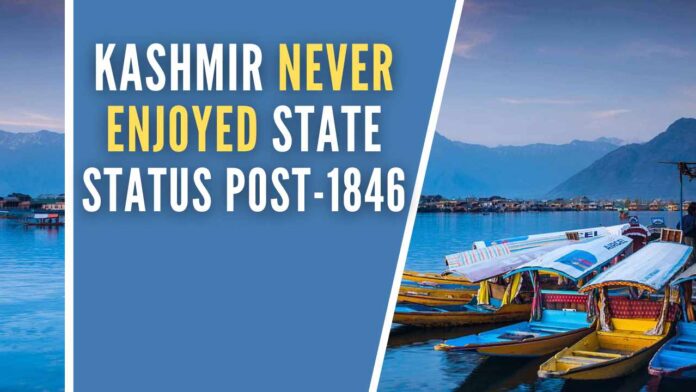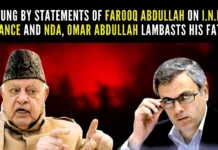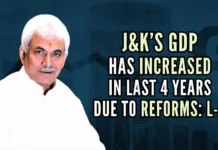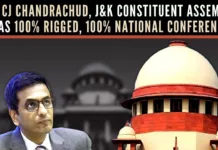
Misrepresenting facts
It has become customary with certain elements in and outside the Indian establishment, and even outside India, to misrepresent facts as far as the political status of Kashmir is concerned. They term this region as “Kashmir State”, willfully suppressing the fact that Kashmir was no more than a dot on the J&K’s political and physical map. But it would be too much to accuse them of misrepresenting facts, which have all the potential of misleading the nation and outraging the sensitivities of the people of Jammu province and the trans-Himalayan Ladakh.
Real culprit
The real culprit was the (British-nominated) Jawaharlal Nehru-led dominion government. It was his government that moved a motion in the Indian Constituent Assembly on May 27, 1949, seeking change in the nomenclature of J&K State to appease his friend and Kashmir-based National Conference’s president Sheikh Abdullah and others of his ilk in the Valley. The motion wanted the Constituent Assembly to rename J&K State as “Kashmir State”. The motion to this effect was moved by none other than the former J&K PM Gopalaswami Ayangar, then controlling the Ministry of Jammu and Kashmir (J&K) Affairs. Ayangar served as PM of the princely State of J&K between 1937 and 1943.
Moving the motion, Ayangar said: “Kashmir means J&K and in the draft Constitution, the Schedule mentions the State of Kashmir and in the list that is attached to the Constituent Assembly Rules, it is already described as Kashmir”. He urged the members of the Constituent Assembly “not to make this an issue and let this description of the State of Kashmir stand because if you change it, we will have to change other things which are already in our Statutes and Rules”.
Opposition to the motion
The motion was opposed tooth a nail by members of the Constituent Assembly like Prof K T Shah from Bihar and Pandit Lakshmi Kanta Moitra from Bengal. J&K then was not represented in the Constituent Assembly. The critics of the motion, especially Prof Shah, who had served as Financial Advisor to Maharaja Hari Singh for almost a decade, cautioned the Constituent Assembly. He, inter-alia said: “The matter of nomenclature is not merely a matter of verbal emendation that it has behind it a significance, a significance, in the sequence of events, not confined only to this House or this country. It has repercussions outside this country…Therefore, we must be careful in every word that we use, so that our expression, our nomenclature, our whole wording is in conformity with the situation and the correct facts”.
The opposition to the motion yielded some results. Ayyangar at the behest of PM Nehru moved an amendment to his own motion and suggested that “the name be read as the State of Kashmir (otherwise known as the State of Jammu and Kashmir”. Had Shah, Moitra, and others not put their foot down, Jammu would have been completely omitted from the nomenclature of the state.
The truth
The State of J&K came into being only on March 16, 1846, under the Treaty of Amritsar, signed between the Dogra Raja, Gulab Singh, and the British Indian government. It was under this Treaty that Kashmir became part of the Dogra Kingdom, then consisting of Jammu Province and the Trans-Himalayan Ladakh, and not vice-versa. Ladakh became part of the Jammu Kingdom in 1834. J&K State was the largest princely state in princely India and Kashmir was just a tiny part of it.
It would be only desirable to point out that the area of Gilgit-Baltistan, which was part of Ladakh Province and is now under Pakistani illegal occupation, is 72,971 sq km. Not one person in this region speaks Kashmiri. They speak Balti, Shina, Wakhi, Burushaksi, Khonwar, Purgi, Changthang, Brokskat, and Ladakhi, to mention only a few. Similarly, not one person in this region is an ethnic Kashmiri. The land area of Pakistan-occupied-Jammu & Kashmir (PoJK), which was part of the Jammu province, is 13, 297 sq km. Like Gilgit-Baltistan, not one person in PoJK is an ethnic Kashmiri and not one person there speaks Kashmiri. The people of this area, like the people of the Poonch and Rajouri districts in Jammu province, speak the Pathowari language.
Jammu two-time that of Kashmir
As for Jammu province, as it exists today, its land area is 26,293 sq km and there is nothing whatsoever that is common between this province and Kashmir. What about Kashmir? Its land area is almost two-time less than Jammu province. Its area is just 15,948 sq km and it’s not homogeneous. Besides ethnic Kashmiris, who speak Kashmiri, this region also houses lakhs of Pathowaris, Gujjars, Bakerwals, and other ethnic minorities (all Muslims). As far as UT of Ladakh is concerned, its land area is over 59,000 sq km and the bulk of the people in this cold desert speak Ladakhi or La-dwags skat, which is almost similar to Balti and also spoken in Kargil and the adjoining Gilgit-Baltistan region.
All this should clear all the cobwebs of confusion and establish that Kashmir is not J&K. Indeed, it would be a misnomer to call the region a “Kashmir State”.
Note:
1. Text in Blue points to additional data on the topic.
2. The views expressed here are those of the author and do not necessarily represent or reflect the views of PGurus.
PGurus is now on Telegram. Click here to join our channel and stay updated with all the latest news and views
For all the latest updates, download PGurus App.
- ‘Kashmir My core constituency’: Revisiting July 12, 2003 to understand politics, Omar Abdullah-style - March 15, 2024
- Total deviation from traditional approach: Seven takeaways from PM Modi’s March 7 Srinagar visit - March 9, 2024
- Status of political parties: Why is further J&K reorganization imperative? - March 1, 2024










